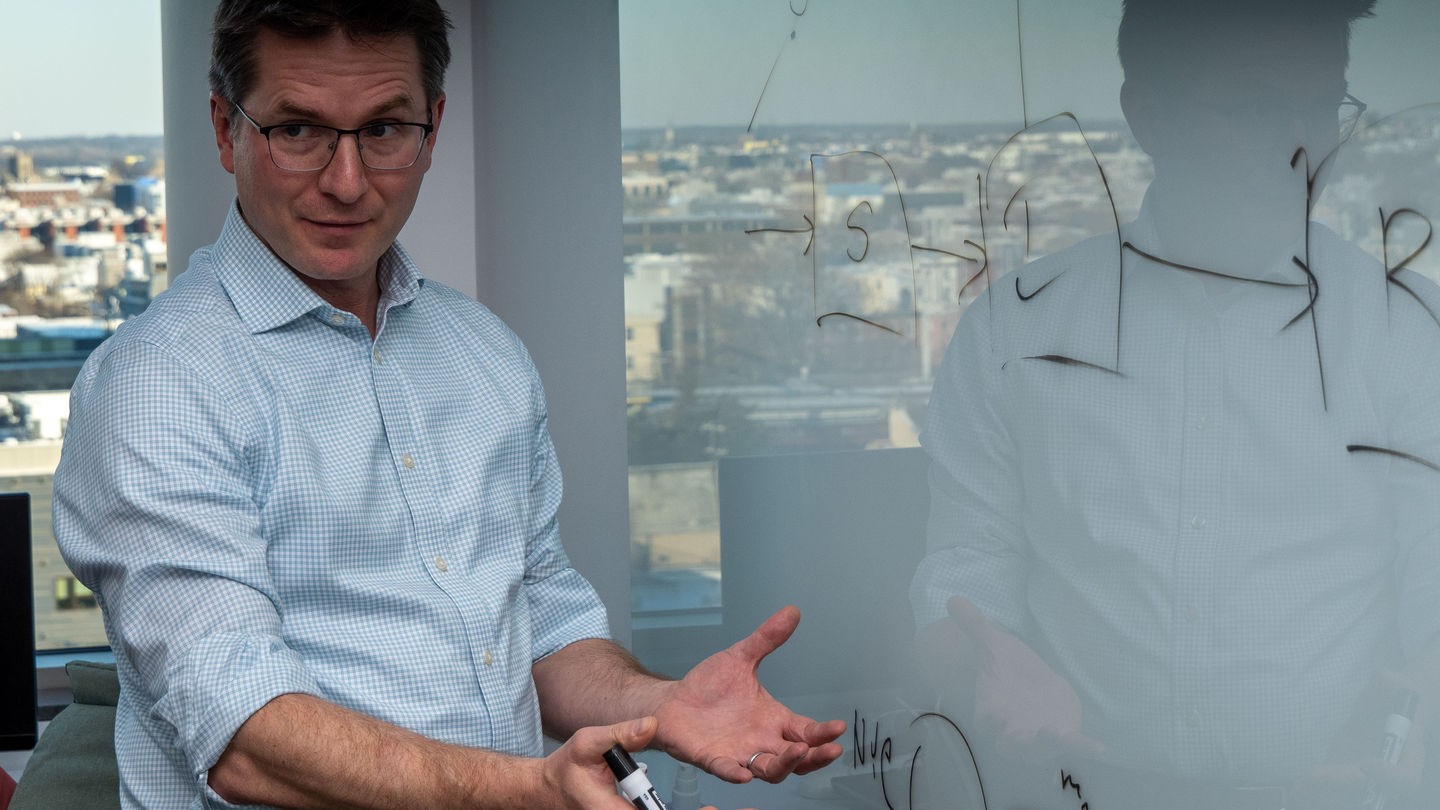
An internationally recognized scholar in the field of infectious disease dynamics and modeling, Maciej Boni was a professor of biology at Pennsylvania State University before recently joining Temple University. He earned a doctoral degree in biological sciences in 2006 from Stanford University, then went on to postdoctoral positions at Princeton University and the University of Oxford, where he investigated the application of bioinformatics tools to detect genetic recombination, the evolution of drug resistance, and the epidemiology of respiratory disease in the tropics.
Boni’s research program encompasses diverse aspects of infectious disease dynamics. From 2008 to 2017 he was principal investigator and head of the Mathematical Modeling Group at the Oxford University Clinical Research Unit in Ho Chi Minh City, Vietnam. There, he led research focused on the epidemiology and evolution of influenza, malaria and dengue.
At the heart of your research, what is the big question you are trying to answer?
There are the big ideas that we've always worked on. And then there's the big idea that's important right now.
The general motivation behind our research is the mitigation of disease transmission by responding to epidemic and pandemics and the control of drug-resistant infections. In doing this work, we also study the evolution of viruses, parasites and bacteria and this is an area that’s known as evolutionary epidemiology. The work in this area is very applied today. It's not only understanding how disease transmission happens and how pathogens evolve, but also putting plans and responses in place when they’re needed.
The big idea that we are focusing on right now is the global response to drug resistance in malaria. Today, there is only one effective anti-malarial drug that's used worldwide, artemisinin. Artemisinin is deployed in combination therapies (called ACTs) and the concern right now is that high-grade drug resistance might emerge and render these valuable drugs much less efficacious.
Artemisinin resistance was first identified about 15 years ago in Southeast Asia. More recently, resistant parasites were found in East and Central Africa, an environment with a hundred million malaria cases occurring per year. It’s a slowly unfolding emergency and a real danger for all malaria treatment worldwide for the next 10 years.
How do you find those answers?
We build mathematical models of epidemics. With a model, you can look at past epidemics to understand, say, the time required for the cumulative number of infections to double for a measles epidemic in England in the 1940s. We can also investigate hypotheticals. For example, if we vaccinate younger people versus older people, we can ask what outcomes should be expected.
Our focus right now is using mathematical modeling to build detailed response strategies. If we have this much money and this many drugs, here's how the next six weeks of distribution should look. We are putting together precise response policies, first for Rwanda, next for Uganda, and very shortly for Tanzania. These are the first three countries in Africa that have begun putting together their response strategies for malaria drug resistance.
Describe a tactic that might be included in a detailed response strategy?
One is the deployment of multiple first-line therapies (or MFT). What we're doing right now is diversifying the drug use in specific countries, combining artemisinin, a drug that is very effective at killing the malaria parasite, with other drugs, such as lumefantrine, amodiaquine, and piperaquine, that have a lower rate of efficacy. These drug combinations work really well and they’re effective at delaying the onset of drug resistance.
In your field, what sets your research lab apart?
We are very interdisciplinary. We have expertise in epidemic modeling. We have expertise in field epidemiology. We have expertise in evolutionary biology—we know how the parasite will evolve different types of resistance under different conditions. And we have expertise in genomics. There are other groups that have one or some of these, but we've been able to put all four together.
How will you involve CST students in research?
We already have a strong group of graduate students, but we really want to offer opportunities for undergraduates. Right now, we are looking for Temple students with experience in computer science, statistics, mathematics, or bioinformatics. Undergraduates who have those quantitative skills and want to join our lab should reach out to me.
What big impact will your research help make?
Right now, artemisinin resistance levels in parts of Central Africa are in the 10 to 20 percent range. If we can maintain that level of resistance, as well as preventing a spread to other African nations in the next five to seven years, that will be an enormous success. Looking further out, it’s helping to get public health systems to adopt more computational methods in their decision making.
What brought you to Temple University?
The opportunity to work and collaborate with other researchers in Temple’s Institute for Genomics and Evolutionary Medicine (iGEM), which takes a unified approach to genomics and medicine. I’ve also worked with CST Professor Sergei Pond on the history of coronavirus, and he was instrumental in my decision to join iGEM. Philadelphia also has a strong community of researchers across universities and hospitals working with infectious diseases.
What inspired you to pursue a career in research?
When I was in college, many of the top mathematics majors were recruited to go into investment banking. Maybe I was a bit more idealistic as a 19- or 20- year-old student. I enrolled in a course called theoretical biology taught by, now, one of the most famous professors in the field. It just kind of came to me that if I could use a mathematics degree to help control infectious disease, that seemed like a much more satisfying career route.
What's one quirky topic that you're particularly passionate about?
I love opera. I basically learned Italian as a young person by listening to opera. It’s a beautiful art form. The human voice is an instrument, and one that is much more evocative than any of the other instruments individually.
